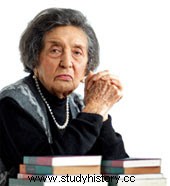 MARIA ROSTWOROWSKI "Lima before Lima" By Jorge Paredes Source:El Dominical, Lima 01/16/05
MARIA ROSTWOROWSKI "Lima before Lima" By Jorge Paredes Source:El Dominical, Lima 01/16/05 One of the central contributions of the copious and revealing work of Dr. María Rostworowski has been the study and discovery of the pre-Hispanic central coast . Key books such as Curacas y sucesiones, costa norte (1961) Indigenous Lordships of Lima y Canta (1978) or Costa peruana prehispánica (1988) tell us about life in Lima, before the Spanish foundation. We talked to Dr. Rostworowski so that she could paint a picture of what the city was like back then.
It can be said that Lima existed before the arrival of the Spaniards. What was the pre-Hispanic population of the central coast like?
Of course, Lima was a very leafy valley. There are several chroniclers who say that it was an orchard because of the number of trees it had, both ornamental and fruit-bearing. It was a very cool valley. The small curacazgo of Lima was one of the many that existed in the valley, such as the lordship of Sulco, the lordship of Huala and that of Maranga, all of which were subject to the Lord of Pachacámac, who ruled both the lower valley of Lurín and in the lower valley of Lima.
Is it known how many people these curacazgos had?
They were small villages with farmland, but subject to an older lord. Long before the Spanish arrived and even before the Incas arrived, it is known that the central coast was a highly populated valley. However, before the Spanish appeared, the diseases that devastated all of Central and South America appeared. Eruptive epidemics, such as measles and smallpox, and the flu, which were unknown diseases here, caused a frightening demographic decline that did not stop until after the Colony. I have seen files that account for many "ayllus deceased" due to illness. Later, during the civil wars between the Spaniards, both sides used the indigenous people as ammunition and food carriers, with all this the population was considerably decimated. It is known from archives that Pachacámac, which was numerous, at the end of the 16th century had only seven inhabitants. It was truly a demographic catastrophe.
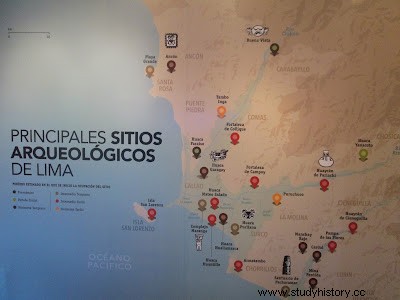 Archaeological Sites of Lima And what was the importance of Pachacámac in the central coast?
Archaeological Sites of Lima And what was the importance of Pachacámac in the central coast? Pachacámac was the most important god of the entire coast. He was the god of the night and of earthquakes, the lord of seismic movements. He was very feared. They adored him precisely so that he would be calm, because they said that if he moved, a tremor would occur; if it moved more an earthquake would come; and if he got up it was the end of the world. The temple also had a much consulted oracle. Politically, it was a theocratic government. In manuscripts from the 16th century, the existence of a senior priest does not appear, only a curaca, but I think there were priests, because in a letter from the 16th century it is said that the "bishop of Pachacamac had gone to visit Atahualpa" . It is probable that in Spanish terminology the word "bishop" is used to designate a character who held the position of priest. Now, it is not known how the priest and the curaca shared power.

Apart from Pachacámac, Lima also had an oracle, do you know where it was located?
It was located in La Calera, in what is now Plaza Italia. There was a much adored huaca there. Eguiguren says that this huaca was so adored that the Spaniards demolished it to build a plaza in its place. That is why Plaza Italia has a trapezoidal model, which is Inca style, and does not follow the model of the other Hispanic squares in Lima.
And the perforated stone that is near there? Did it belong to the same huaca?
It has nothing to do with it. They surely adored it as they did with many guancas (sacralized stones), but it has nothing to do with the oracle of Lima. Rather, there was another huaca where the Government Palace is now, which joined what is now the post office building. All these huacas were only worship centers, but the only one that had a territorial extension was Pachacámac, whose party was attended by people from all over the world.
And the God Pachacámac was made of wood?
It was the same as the one now in the Pachacámac Site Museum, although this was not the idol itself because Hernando Pizarro, after asking for the ransom, tore down the vault where the main idol was. But López de Gomara says in his chronicle that there were idols reproduced throughout the citadel of Pachacámac, just as we now reproduce the image of the crucified Christ. One of these reproductions was found in the painted huaca and it is the one we can see in the Site Museum.
You mention in one of your books that the cult of Pachacámac was continued later with the the cult of the Lord of Miracles.
There are similarities in worship. Because Pachacámac was the god of tremors as well as the Lord of Miracles. Pachacámac was considered the patron of the coast, a similar title that was given to the Lord of Miracles since the Colony as the patron of Lima. It is probable that people from the orchards of Hernán González, encomendero of Pachacámac, came to work in Lima and with them the cult arrived in the city. When there were tremors, the indigenous people invoked Pachacámac, something that was later followed by the black slaves. And it is also known that the ancient Peruvians used to paint their divinities, there is even talk of the existence of a canvas where a son of Pachacámac was reproduced. A century later, when the ancient indigenous people of the coast died, the black slaves continued with the cult and a century later the adoration of the Lord of Miracles was born.
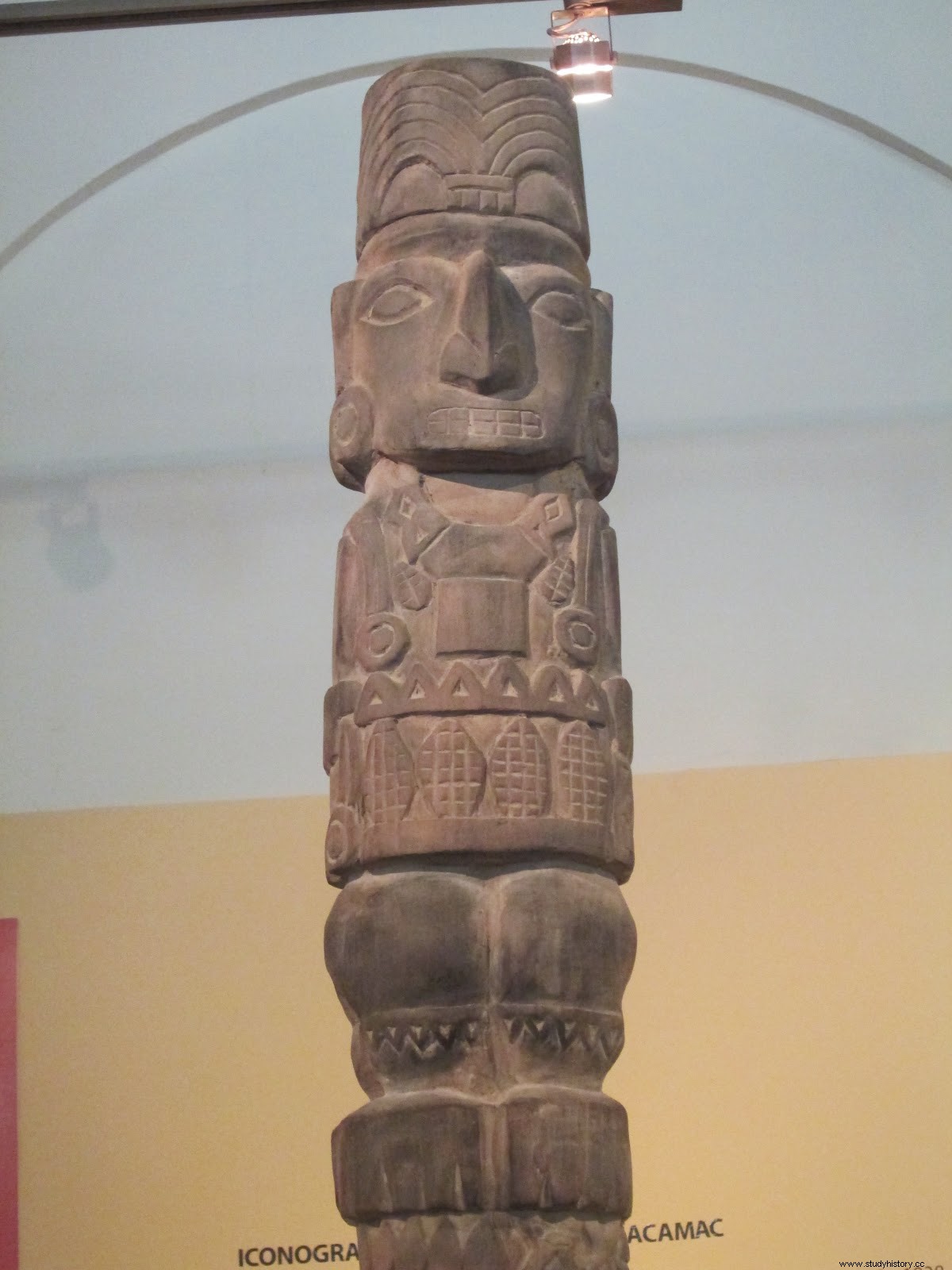 Pachacamac Oracle And regarding the curacas of Lima, who was actually Taulichusco?
Pachacamac Oracle And regarding the curacas of Lima, who was actually Taulichusco? He was the curaca of Lima and was present at the time of the Spanish foundation. Taulichusco was the yanacón of Mama Vilo, a secondary woman from Huayna Capac. And his brother, Caxa Paxa (Kasha Pasha), was a yanacón from Huayna Capac and lived in Cusco. Taulichusco did not live long, he even died before Pizarro. It was inherited by his son Francisco, who was his co-regent, who also died a few years later and was succeeded by his brother, Don Gonzalo. That is why my book Señoríos indigenas de Lima y Canta is directed "To don Gonzalo, curaca de Lima". It's sad but people don't know the history of the city. In Mexico they have made statues of all their pre-Hispanic characters, and I do not know why in Peru the same has not been done. It is necessary to analyze the etymology of the name of the curaca of Lima, Taulichusco, since Harth-Terré finds a Mochica origin this voice, when it comes to the Quechua of the central region. In the Quechua Lexicon of Domingo de Santo Tomás it reads:Tauri-atramuzes. Now, lupine or lupine are different spellings to designate Lupinus mutabilis. According to Weberbauer, the vernacular names for Lupinus are tarhui in the south and chocho in the north. However, in González Holguín's Quechua dictionary we find:Tarui-lupins or chochos, while Bertonio (Aymara) points out:Tauri-Lupins or chochos or Lupinos that they call in Italy. The curacas of Surco were surnamed Tauri Chumbi and the Lord of Lima Tauli, a coastal phonetic variant. The second word Chusco, according to Domingo de Santo Tomás means the number four; coastal word different from the Cusco Tahua.
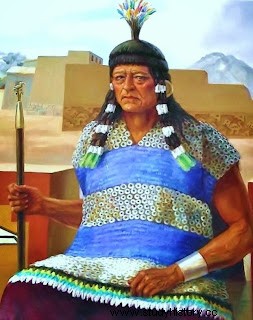 Tawli Chusku (by M. Cajahuaringa) You spoke of the Lima valley as a very leafy place, was there an ecological system in the city?
Tawli Chusku (by M. Cajahuaringa) You spoke of the Lima valley as a very leafy place, was there an ecological system in the city? There are the hills behind Pachacámac, which were small curacazgos, like Manchay. I have traveled through those areas that are small ravines with villages behind the Cruz de Hueso, in San Bartolo. These hills had diverse vegetation. There were molles, tara, and various cacti. They are hills that have not yet been studied enough.
The name of Lima Much has been speculated about the origin of the name of Lima, what is your hypothesis?
The name of Lima comes from the coastal Quechua speech that pronounced the "ere" as "ele". That is why "Lima" or "Límac" was the pronunciation of "Rímac" and "Sulco" was the pronunciation of "Surco". That is why there are also documents where "Mala" appears as "Mara" and it is also known that the coastal people said "Caxamalca", while the mountain people said "Caxamarca" (Kashamarka).
THE ANDEAN FACE OF THE LIMA FOUNDATION
Almost unanimously, the speeches and newspaper articles on the occasion of the commemoration of a new anniversary of the founding of Lima coincide in highlighting the Spanish participation in said event, while silencing the Andean aspect of that fundamental episode of colonization of the ancient Inca territory. Both the curacazgo and the river that crosses their lands and fertilizes their fields were called Lima or Limac. The Quechua of the central coast, softer than that of Cusco, did not use the "r" but the "l". Hence, the place names of the central plains were pronounced differently, depending on the origin of the speaker:serrano or yunga.
Lima was a small curacazgo subject to the lordship of Ychsma, which included the low valleys of the basins of the Rimac and Lurín rivers. Its main seat was the ceremonial center called Pachacámac by the Inca conquerors in honor of the god of the same name, whose cult radiated over the entire central region of Tahuantinsuyo and also reached distant places in the Andean area. Not only were the omens emitted by the divinity appreciated, but he was revered as the god of tremors. His anger manifested itself in the intensity of the shaking and the degree of his anger, in the destructive force of the seismic waves.
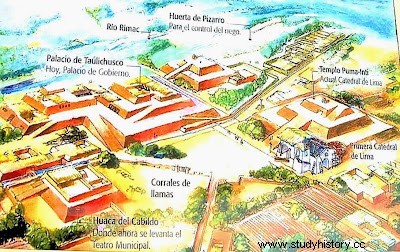 Limaq Llaqta. Graph elaboration:Juan Gunther At the time of the arrival of the Spaniards in these lands, the old Taulichusco was curaca of Lima, a character who did not belong to the lineage of the ancient chiefs of the region, whom the Cusco conquerors replaced by addicts. It should be explained here that, according to the constant Andean duality, the curacazgo of Lima was divided into the factions of Anan and Lurín (Hanan and Rurin), each of them with their respective curaca.
Limaq Llaqta. Graph elaboration:Juan Gunther At the time of the arrival of the Spaniards in these lands, the old Taulichusco was curaca of Lima, a character who did not belong to the lineage of the ancient chiefs of the region, whom the Cusco conquerors replaced by addicts. It should be explained here that, according to the constant Andean duality, the curacazgo of Lima was divided into the factions of Anan and Lurín (Hanan and Rurin), each of them with their respective curaca.The expenses incurred in maintaining the Hispanic founders and in the construction of the new city fell naturally on the Indians. This heavy load severely affected the native settlers of Lima, whose number soon decreased alarmingly. According to data from Spanish archives, in 1535 the lordship of Lima had some 4,000 tributaries, men of working age. In 1544, less than nine years later, there were twelve hundred men left and only 250 in 1557.
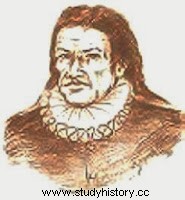 Don Gonzalo Taulichusco, son of Taulichusco the Elder and last curaca of Lima Taulichusco died before Pizarro's assassination in 1541. The succession was carried out without major problems, since the new chief, Guachinamo, had collaborated in the government of his father as co-regent. His rule was short-lived. That is how a son of Taulichusco, named Gonzalo, was appointed to the position of curaca, who we know desperately defended the rights and lands of his people.
Don Gonzalo Taulichusco, son of Taulichusco the Elder and last curaca of Lima Taulichusco died before Pizarro's assassination in 1541. The succession was carried out without major problems, since the new chief, Guachinamo, had collaborated in the government of his father as co-regent. His rule was short-lived. That is how a son of Taulichusco, named Gonzalo, was appointed to the position of curaca, who we know desperately defended the rights and lands of his people.Over the years and the increase in the European Union, the lack of land to build houses and orchards began to make itself felt in Los Reyes. For this reason, in the time of the Marquis of Cañete, it was decided to move the natives of Lima again to a more remote place, in order to take advantage of their lands. He decided to create the town and indigenous reduction of Santa María Magdalena, where not only the natives of Lima went to live, but also those of Maranga, Guatca, Amancaes and Guala. After so many injustices, it is time for the commune of Lima to offer a belated vindication to Don Gonzalo and, in his person, to his former inhabitants.
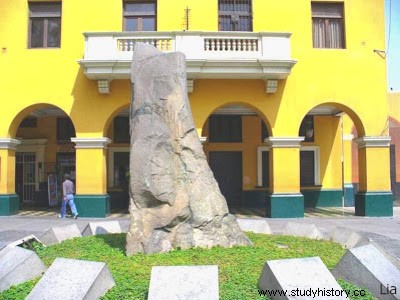 Wanka in granodiorite, Andean basal stone, Tribute from the city of Lima. To Taulichusco the elder, the last of its native rulers.
Wanka in granodiorite, Andean basal stone, Tribute from the city of Lima. To Taulichusco the elder, the last of its native rulers. 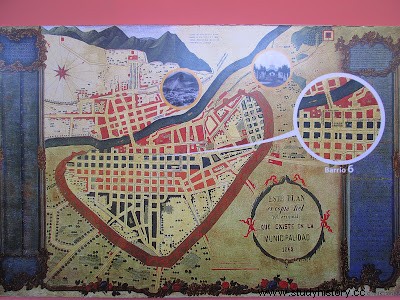 Lima surrounded by the colonial wall
Lima surrounded by the colonial wall AR SITES LIMA CHEOLOGICALS
